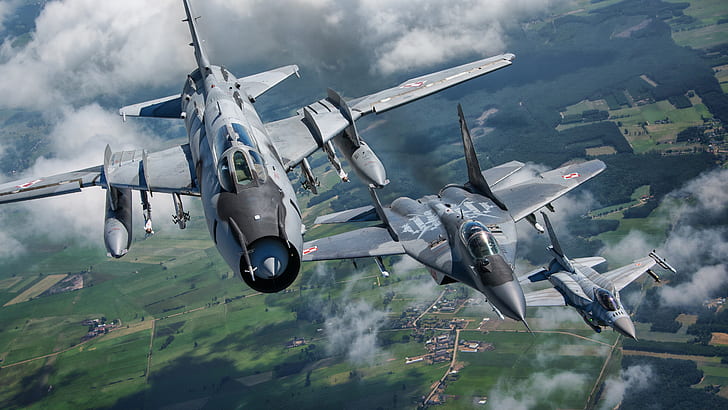

Which one is deadlier, an F-16 or a Mig-29?
Comparing the lethality of two fighter jets, such as the F-16 and the MiG-29, is a complex task as it depends on various factors and capabilities. It is important to note that lethality is not solely determined by the aircraft itself, but also by the pilots' training, mission objectives, and the specific scenario in which they are deployed. Additionally, the exact specifications and capabilities of these aircraft may vary across different versions and countries. However, we can analyze some aspects to provide a general understanding.
1. Performance:
The F-16 and MiG-29 are both fourth-generation multi-role fighter jets, designed to excel in air-to-air combat. The F-16 is known for its agility, high thrust-to-weight ratio, and advanced avionics, which provide excellent situational awareness and maneuverability. The MiG-29 also possesses good maneuverability, especially at low speeds, thanks to its thrust-vectoring engines. However, the F-16 generally has a higher sustained turn rate, giving it an advantage in dogfights.
2. Avionics and Sensors:
Modern F-16 variants, such as the F-16 Block 50/52, are equipped with advanced radar systems (e.g., AN/APG-68(V)9) that provide enhanced detection and tracking capabilities. They also have advanced electronic warfare systems to counter enemy radars and missiles. The MiG-29 features a powerful radar (e.g., N019E) and electronic warfare systems as well, but may have a slightly shorter detection range compared to the F-16.
3. Weapons:
Both the F-16 and MiG-29 can carry a wide range of air-to-air and air-to-ground weapons. The F-16 is often equipped with AIM-120 AMRAAM and AIM-9 Sidewinder missiles for air-to-air engagements, while also capable of employing precision-guided munitions for ground attacks. The MiG-29 can carry R-27 and R-73 missiles for air-to-air combat and various air-to-ground missiles and bombs. The specific weapon loadouts depend on the mission requirements and the country operating these aircraft.
4. Training and Tactics:
The effectiveness of any fighter jet is heavily influenced by the training and tactics employed by the pilots and the supporting infrastructure. The proficiency of the pilots, their experience, and the quality of training programs play a crucial role in determining the lethality of an aircraft. Additionally, the integration of these aircraft into a larger air force and their ability to operate in complex scenarios, such as network-centric warfare, also impacts their overall effectiveness.
It is crucial to understand that the lethality of a fighter jet cannot be solely determined by comparing individual specifications. Real-world combat effectiveness depends on a multitude of factors, including the overall military strategy, tactics, and operational capabilities of the air force operating these aircraft. Furthermore, advancements in technology and the introduction of new variants can significantly alter the capabilities and lethality of these aircraft over time.
References:
1. "F-16 Fighting Falcon." Lockheed Martin. [Online]. Available: https://www.lockheedmartin.com/en-us/products/f-16.html
2. "MiG-29 Fulcrum." Russian Aircraft Corporation MiG. [Online]. Available: http://migavia.ru/en/production/military/mig-29-fulcrum/
3. R. Spick, "The Great Book of Modern Warplanes." Zenith Press, 2000.
Related Posts
© 2025 Invastor. All Rights Reserved

User Comments